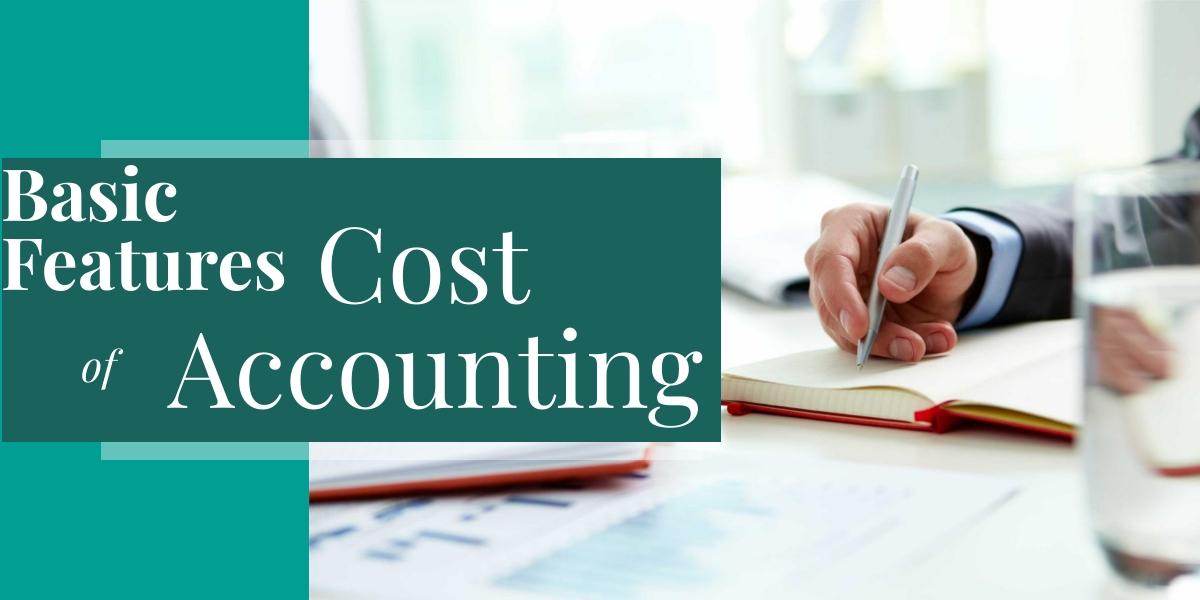Cost Accounting
The Cost Accounting or Costing System is the foundation of the internal financial information system for managers in any organization.
To plan and control all the activities of the organization and to make decisions about the future, management needs information that is provided by the costing system.
What is the COST?
The word cost can be used as a noun when it is referred to as the “cost of an item”. On the other hand, it can be used as a verb, when we say to attempt to “cost an activity”.
The word Cost has many different types, usefulness, and limitations in different circumstances related to cost accounting.
COST Units
This is a unit of product or service relative to which cost is determined.
| Sector – Industry | COST Unit |
| Education | Students Enrolment |
| Professional Services | Chargeable Hour |
| Power Supply | Kilowatt per Hour |
| Component Making | 1000 Components |
| Activity | COST Unit |
| Sale | Customer Call |
| Credit Control | Account Maintained |
COST Units Composite
Services are usually intangible, due to which, the cost of units are often composite cost units and made up of two parts.
| Business | COST Unit |
| Hospital | Per Day Per Patient-in |
| Traveling Company | Per Passenger Per Mile |
| Hotel | Per Bed Per Day/Night |
COST Centers
For which costs are accrued, either its function, service location, an item of equipment, or production.
| COST Center | Example |
| Equipment | Packing Machine |
| Activity | Quality Control |
| Function | Sales Representative |
| Service Location | Stores, Canteen |
COST Objects
Anything for which costs can be established is the Cost object. For example, a product, service, activity, center, etc.
Cost’s Classification
The cost can be classified into many different means. Cost grouping depends upon the purpose of the classification exercise.
To devise an effective system to gather and analyze the costs, it is essential to be able to categorize all costs to be able to organize them into logical groups.
Cost’s Classification According to Their Nature
Cost is grouped according to its nature whether it is material, labor, or expense.
Material Cost: Includes obtaining the material and receiving it within the organization, carriage inwards.
Labor Cost: Includes wages and salaries related to the cost of employment.
Expense Cost: Includes all costs other than Material and Labor. For example, rent, power, postage, utility, etc.
These classifications can be further subdivided which may include the following:
- Raw Material
- Components
- Consumables
- Maintenance Material
This list may even be further subdivided according to their type.
Cost Classification According to Their Purpose
Cost is grouped according to its reason. The broader classification of this kind of cost is to divide the cost into Direct Cost and Indirect Cost.
Direct Cost: A direct cost that is directly identified with the object we are trying to cost. Usually, Direct cost is the combined cost of Direct Material Cost, Direct Labor Cost, and Direct Expenses.
Direct Material Cost: Any material, component, or raw material that is directly utilized to manufacture any unit of product or good is Direct Material. For example, suppose that a fixture maker is defining the cost of a wooden chair. The manufacture of the chair has involved the use of wood, bolts, and metallic drawer handles.
Direct Labor Cost: Any wages paid to the machine operator, assembler, or finisher who is directly involved in producing a unit of product or good for instance chair.
Direct Expenses: Direct expense would be the payment made to the designer of the chair who may be entitled to a royalty payment for each chair made.
Indirect Cost: All costs other than Direct Costs are classified as Indirect Costs. Although it is incurred in the production of the chair, it cannot be directly attributed to a particular cost unit. Examples are as follows:
| COST Incurred | Cost Classification |
| Material related to Lubrication Oils and Cleaning Material |
Indirect Material Cost |
| Salaries of Floor Supervisor | Indirect Labor Cost |
| Rent of Factory, Power | Indirect Expense |
It is important to understand that a particular cost may sometimes be a direct cost and sometimes an indirect cost depending on the cost object.
For example, the Salary of the Floor Supervisor is the Direct Cost of that Particular Department.
However, it is an indirect cost of each unit produced because it cannot be specifically identified with any particular cost unit.
Cost’s Elements
The elements of costs are the essential parts of the cost that structure the total cost of a cost object.
Let’s See the framework of the cost statement for a single cost unit demonstration, how the total cost for a unit may be put up.
| Particulars | $ | $ |
| Direct Material | 10 | |
| Direct Labor | 5 | |
| Direct Expenses | 2 | |
| Total Direct Cost or Prime Cost | 17 | |
| Production Overhead: | ||
| Indirect Material | 3 | |
| Indirect Labor | 5 | |
| Indirect Expenses | 5 | 13 |
| Total Production or Factory Cost | 30 | |
| Other Cost: | ||
| Selling & Distribution Cost | 3 | |
| Administration Cost | 4 | |
| Total Cost | 37 | |
| Profit | 8 | |
| Selling Price | 45 |
The Three Direct Costs are summed to derive the Total Direct Cost or Prime Cost.
Also, Read COST BEHAVIOR

3 thoughts on “Cost and Management Accounting”
Question:How can you define Accounting in a single sentence?
Answer: Accounting is a Business Language
Thank Mr. Raza,
We really appreciate your efforts to share knowledge with us. Keep visiting and share informative ideas for betterment of society.